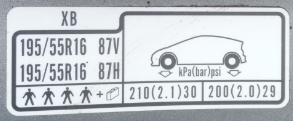Yes, it’s that time of time year and we all want to get away. Turned off gas? Check. Closed doors and windows? Check. Lights on timer in kitchen and bedroom? Check. Load the car and drive off? Hold your horses. The last thing you want is to break down before, during or after having reached your destination and spend precious holiday time waiting for recovery .
If you want to make sure your car is ready for the journey and avoid nasty surprises, in good time, check: the battery: this is the major cause of breakdowns, so look at the date and if more than four-five years’ old, consider replacing; also keep a eye on the radiator coolant level, windscreen washer fluid and wiper blades, engine oil level, a/c refrigerant level, all lights and bulbs and brake pads or shoes.
Now, the tyres, second (and some years first) cause of breakdowns: ideally, you make a visual inspection every month, but if you haven’t, do it now before starting your drive: they are all that is between your car and the road, your ultimate protection, essential for your safety and that of your passengers. Regardless of the make of your tyres, this is Nankang’s Six-Point Good Practice Checklist.
Your correct pressure is stamped on the sill of the driver’s door . Check all tyres when they are cold and, if you have a spare, check its pressure too. Do this even if you have a tyre pressure monitoring system – better safe than sorry. Tyre pressure must be the same each axle, but may be different front and back.
Tyres lose pressure over time. If they are under-inflated, they flex and deform, affecting your car’s handling, grip and braking, and building up heat that can lead to failure. Tyre under-inflation is the main cause of tyre blowout. Also, they wear out faster and make you burn more fuel.

The legal tyre tread depth for cars in the UK and Europe is 1.6mm across the central three-quarters of the tyre. Nankang tyres have wear indicators spaced through the main grooves: if they are flush with the level of the tread, the tyre must be replaced. Check depth, faults and wear and tear. Tears, cuts, nicks, bubbles or bulges can severely compromise the integrity of the sidewall – vital for maintaining the vertical strength of the tyre, since they absorb so much of the stresses that tyres undergo.
The tyre industry recommends you replace your car’s tyres after 7-10 years and your caravan’s or camper’s after six. Even if they still look good, the rubber becomes progressively dry, brittle and dangerous. Nankang special tyre compound contains anti-oxidising chemicals to slow this process and Nankang fitters will advise if it’s time for replacement.
Every tyre has a date code for when it was manufactured. Look for “DOT” followed by several digits on the lower sidewall of your tyre. The last four numbers are the date of manufacture: in this case, 4014 means the tyre was made in the 40th week of 2014.
Tyres have a maximum load capacity, and so does your car as a whole. If you overload, it affects the car handling, especially when cornering and breaking, and burns more fuel. All cars have different payloads, but here are some figures: the Office of National Statistics says that the average British man weighs about 83kg and an average woman 70kg (respectively 185 and 155lbs). So, two couples travelling together would weigh some 310kg (660 lbs). Payloads of small family cars vary between 380 and 450kg (840-990 lbs), which allows for 70-140kg (155-310lbs) for extra passenger and/or holiday luggage. Squeeze in one more average passenger and a smaller capacity car would be already past its limit – without any luggage.
Typically, front tyres wear faster because of the weight of the engine and the effect of steering. Therefore, when the tyres are all the same, it is usual to rotate the front with the rear ones every 6000-7000 miles to make them last longer and equalise any wear. However, a major British chain of garages recommends instead to keep the best tyres always at the back, to ensure handling and stability. In this case, if your tyres are all the same type and the front ones are worn, replace them with the rear ones and fit the new ones at the back. If in doubt, your Nankang fitter will advise you for your specific requirements.
If a wheel is out of balance, it will cause vibrations that can be felt in the steering wheel and sometimes even in the seat. If you feel your tyres wobble above 40 or 50mph and you see uneven wear and tear, your wheels may need to be rebalanced. This can be fairly simply fixed by a tyre specialist and prevent further deterioration of your tyres.
This is a suspension issue and it needs to be done by a garage if your car pulling to the left or right, there is uneven or rapid tire wear, your steering wheel is crooked when driving straight and your tyres squeal. Get it done when you buy new tyres to stop them from wearing unevenly.